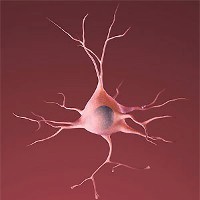National Institutes of Health is funding three new neurological drug research initiatives to address Fragile X syndrome, nicotine addiction, and age-related macular degeneration. Awards for the three projects, from the National Institute of Neurological Disorders and Stroke (NINDS), total nearly $446,000.
The three studies are funded under the Neurotherapeutics Network, part of the NIH Blueprint for Neuroscience Research program. The Neurotherapeutics Network supports neuroscience researchers with promising bioactivity assays and small molecule compounds, but needing further resources or expertise to transform these compounds into drug candidates.
The network serves as a mechanism to move drug candidates designed for neurological disorders from proof-of-concept through preclinical development and into early clinical trials. This part of the drug development process — covering lead optimization, drug candidate selection, and pre-clinical safety tests — is known as the financial “valley of death,” since it often falls between basic research funding and venture capital financing of clinical trials. For-profit companies, as well as academic and not-for-profit research labs are eligible for funding.
Fragile X syndrome is a genetic condition that results in intellectual disability, behavioral, and learning difficulties such as general and social anxiety, with identifiable physical symptoms, such as long face and connective tissue problems. The condition occurs in both genders, but males are affected more than females, and with greater severity.
Sage Therapeutics, a biotechnology company in Cambridge, Massachusetts is developing a treatment for the anxiety disorders from Fragile X, which are linked to reduced brain activity by a protein known as the GABA A receptor. The company’s lab headed by Albert Robichaud aims to develop a synthetic neuroactive steroid that modulates GABA A receptors and can be administered as an oral drug.
Scripps Research Institute in Jupiter, Florida is studying the ability of neuropeptides that stimulate the orexin-1 receptors, which in turn regulate the stimulation effects of nicotine on the brain. Tests with lab animals at Scripps suggest these peptides affect the self-administration of nicotine, as well as regulate the reinstatement of drug-seeking responses, similar to relapses, in abstinent animals. Paul Kenny and colleagues at Scripps identified promising molecules that generate orexin-1 receptor antagonists for further development.
Age-related macular degeneration or AMD is a common eye condition among people age 50 and over where the macula at the back of the eye that contains millions of light-sensing cells is gradually destroyed. One form of the disorder, called wet AMD, is associated with inflammation and blood vessel leakage in the retina. A team led by Dean Yaw Li at University of Utah in Salt Lake City is developing small-molecule drug candidates that regulate the ADP-ribosylation factor 6 or Arf6 molecule associated with control of the inflammation and blood vessel leakage found in wet AMD.
Funding from these awards will fund the projects for one year, although each of the studies is scheduled to run four to five years.
Read more:
- System Analyzes Baby Cries to Detect Development Disorders
- 3-D Cellular-Level Brain Atlas and Database Developed
- Injectable LEDs Developed to Study Brain Functions
- Early Trial Shows Deep Brain Stimulation Effects on Anorexia
- Trial Tests Tablet App to Assess Neuromuscular Performance
* * *


 RSS - Posts
RSS - Posts
[…] NIH Funds Three New Neurologic Drug Discovery Projects […]